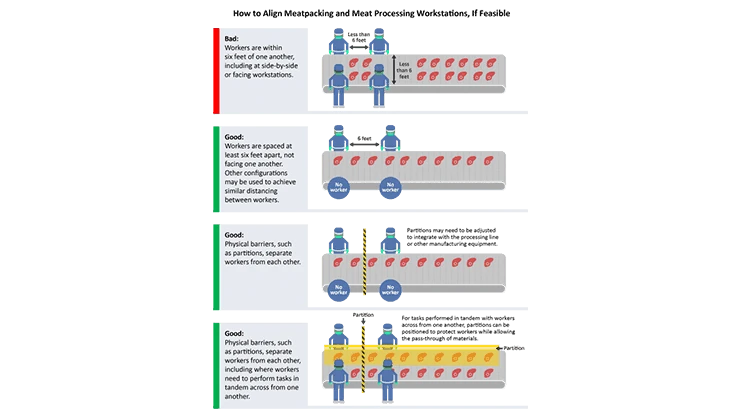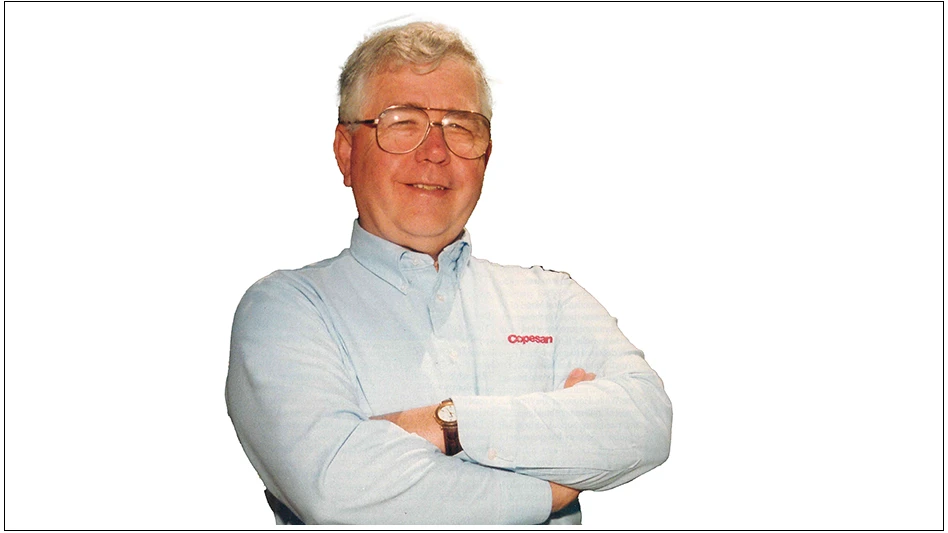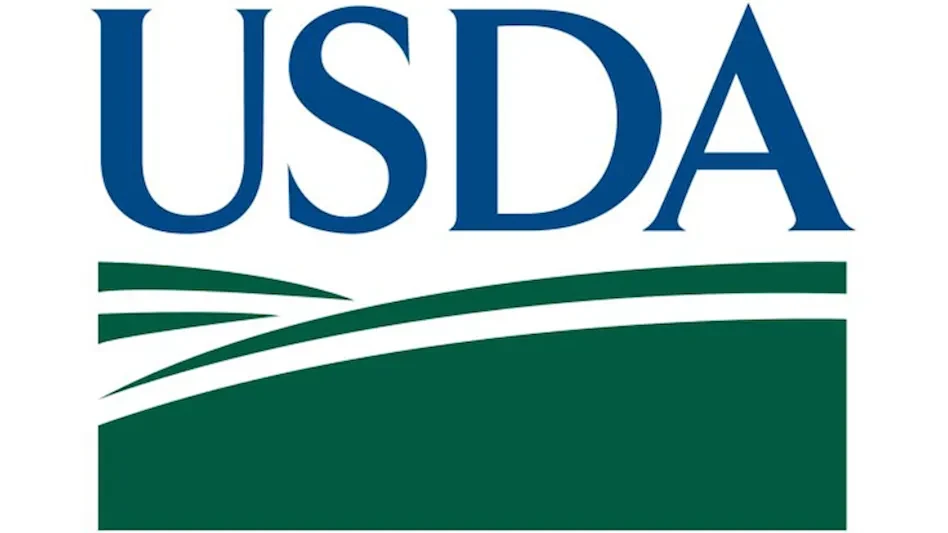
Due to the multiple outbreaks of COVID-19 among meat and poultry processing facility workers that have occurred in the US, CDC has issued new guidance for meat and poultry processing workers and employers. The guidance, however, provides a number of best practices for all food processors and manufacturers.
CDC’s new guidance supplements but does not replace general guidance from OSHA and CDC’s general coronavirus and safety practices web pages.
The guidance is geared toward meat and poultry processing because the work environments—processing lines and other areas in busy plants where they have close contact with coworkers and supervisors—may contribute substantially to their potential exposures.
Distinctive factors that affect workers’ risk for exposure to the coronavirus in food processing workplaces include:
- Distance between workers – workers often work close to one another on processing lines and may also be near one another at other times, such as when clocking in or out, during breaks, or in locker/changing rooms.
- Duration of contact – workers often have prolonged closeness to coworkers (e.g., for 10-12 hours per shift). Continued contact with potentially infectious individuals increases the risk of COVID-19 transmission.
- Type of contact – workers may be exposed to the infectious virus through respiratory droplets in the air – for example, when workers in the plant who have the virus cough or sneeze. It is also possible that exposure could occur from contact with contaminated surfaces or objects, such as tools, workstations, or break room tables. Shared spaces such as break rooms, locker rooms, and entrances/exits to the facility may contribute to their risk.
- A common practice at some workplaces of sharing transportation such as ride-share vans or shuttle vehicles, car-pools, and public transportation
- Frequent contact with fellow workers in community settings in areas where there is ongoing community transmission.
The guidance recommends the creation of a COVID-19 assessment and control plan with a qualified workplace coordinator identified for its development, to include:
- Engineering and administrative controls for six-foot social distancing along with the wearing of cloth face coverings
- Education and training of workers and supervisors about how they can reduce the spread of COVID-19
- Cleaning and disinfection
- Screening and monitoring of worker health
- Management of sick workers
- Addressing return to work
See the CDC guidance for more information on each of these.
Latest from Quality Assurance & Food Safety
- ReposiTrak Welcomes 50 New Produce Suppliers to Food Traceability Network
- First Bird Flu Death Reported in United States
- FDA Issues Final Guidance on Action Levels for Lead in Processed Food Intended for Babies, Young Children
- Penn State Offers Course to Assist Food Processors in Controlling Listeria
- Tanzania Embraces One Health Approach to Enhance Food Safety and Trade
- FDA Releases Allergen, Food Safety and Plant-Based Alternative Labeling Guidance
- Bird Flu Suspected in Some Ohio Waterfowl
- IFSAC Releases Annual Report for 2022 on Sources of Foodborne Illness





